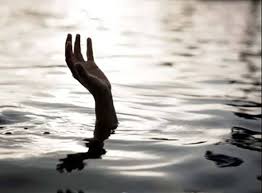As drowning deaths continue to rise sharply across Uganda, the government is urging citizens—especially those living in flood-prone areas like Kampala—to learn swimming as a vital life-saving skill.
Dr. Charles Luzige, Assistant Commissioner for Maritime Monitoring at the Ministry of Works and Transport, made the call ahead of World Drowning Prevention Day on July 25. He emphasized that while the government is working to improve flood control and rescue infrastructure, personal responsibility remains essential.
“Government interventions to address flooding are underway, but individuals must also take responsibility. Swimming is not just a sport — it’s a survival skill, especially when every other safeguard fails,” said Dr. Luzige.
According to Dr. Frederick Oporia, Executive Director of the Trauma and Injury Control Centre at Makerere University School of Public Health, drowning is now one of Uganda’s leading public health threats.
“On average, eight people drown every day in Uganda — that’s roughly 3,000 deaths each year,” Dr. Oporia said. “Over the past three years, drowning has ranked among the top three causes of death in Sub-Saharan Africa, alongside malaria and HIV/AIDS.”
A 2021 study by Makerere University revealed 3,500 drowning deaths across 74 districts in just two and a half years, averaging 1,400 fatalities annually.
The problem is especially serious in Kampala, where heavy rains and poor drainage often lead to deadly flash floods. Locations such as Clock Tower and Meat Packers have been identified as flooding hotspots. In March 2025, at least seven people died when sudden floods swept through various neighborhoods.
Some victims have also fallen into open drainage systems during storms, highlighting both the inadequate infrastructure and the urgent need for public awareness about water safety.
Government Response and Future Plans
To better handle water-related emergencies, the government is setting up a national network of search and rescue centres, coordinated from a central hub in Entebbe. Rescue stations have already been established in Panyimur, Kaisotonya, and Lake Kyoga—locations identified as high-risk through a recent national drowning assessment.
Districts including Masaka, Mayuge, Kyotera, Soroti, Rakai, and Serere have also been listed among the most vulnerable to drowning and flood-related disasters.
Dr. Luzige encouraged Ugandans to stay alert to weather forecasts, participate in community safety programs, and take part in rescue efforts where possible.
“We need a culture where swimming is viewed as basic preparedness—not just recreation,” he said.
Drowning is a preventable tragedy that is claiming thousands of lives each year in Uganda. As weather patterns become more extreme and urban flooding worsens, swimming skills and improved emergency systems could be the key to saving lives. The government’s call for action comes at a critical time, reminding all Ugandans that preparedness begins with individual effort.



